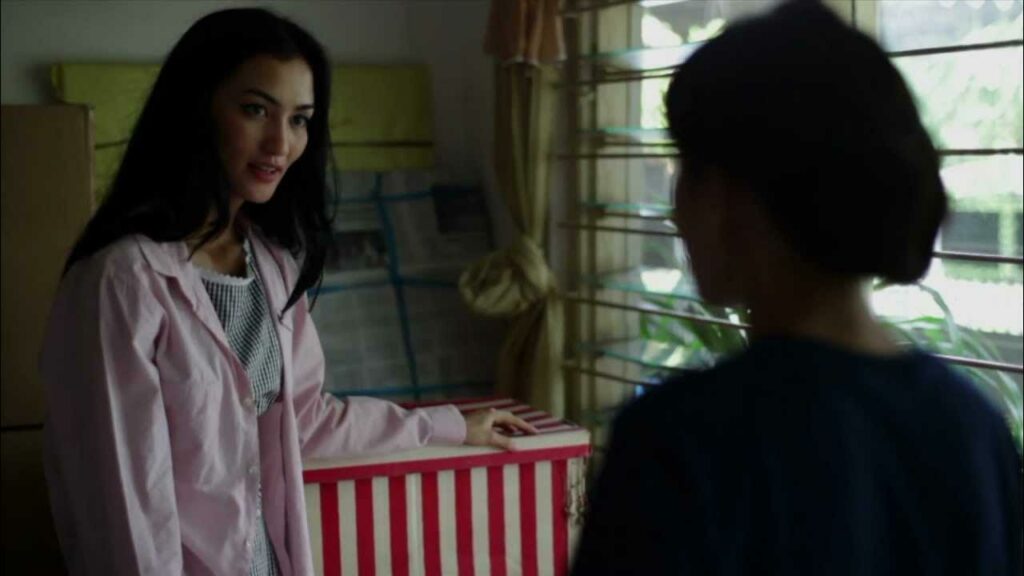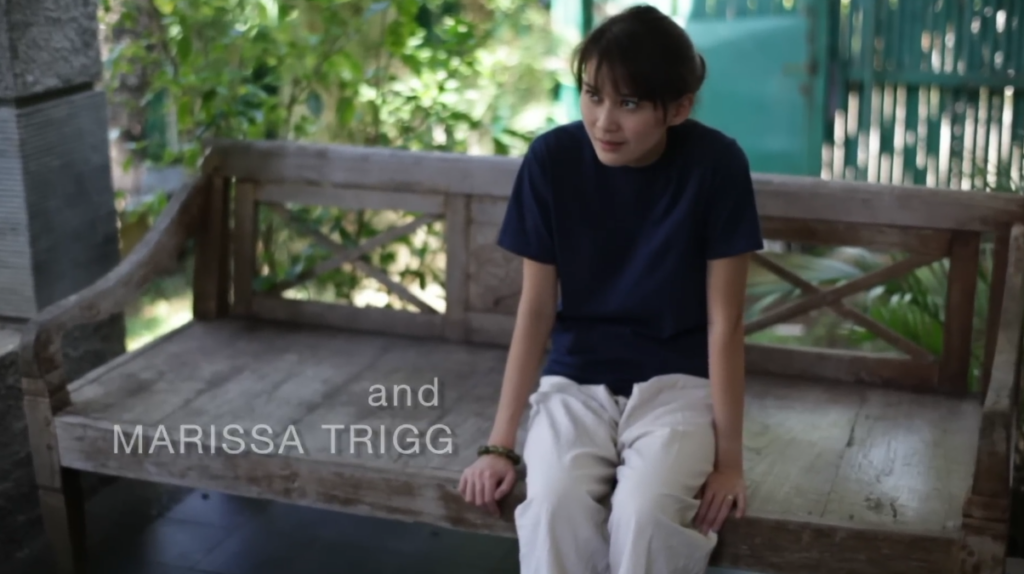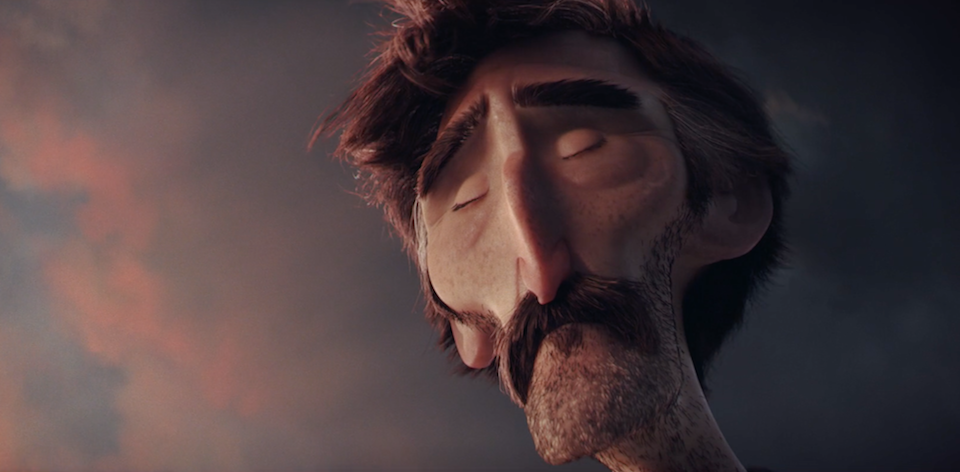The realm of cinematic storytelling is often dominated by the grand scale of feature films, yet there exists a unique potency within the concise narrative of the short film. These smaller canvases can sometimes capture the intricacies of human emotion and interpersonal dynamics with a sharpness and focus that their longer counterparts might lack. Add Word Productions, a name that might not immediately resonate with mainstream audiences, has contributed to this vital form. Among their early works is “Broken Vase,” a 2010 short film directed by Edward Gunawan, which warrants a closer look not only for its own merits but also as a potential indicator of the studio’s formative identity and the artistic inclinations of its founder. This review aims to delve into the nuances of “Broken Vase” while also exploring the origins and evolution of Add Word Productions, the creative forces behind it, and the broader context of its cinematic endeavors.
The Foundation: Tracing the Origins of Add Word Productions
Add Word Productions emerged from the creative vision of Edward Gunawan in Los Angeles, a city synonymous with the film industry. Founded by Gunawan, described as an “artist-entrepreneur,” the studio’s inception likely stemmed from a desire to blend artistic expression with the practicalities of film production. Notably, even before the 2010 release of Broken Vase, Add Word Productions had already amassed a portfolio of ten short films. This early dedication to the short form suggests a deliberate strategy to hone storytelling skills and establish a creative footprint within the independent film landscape. Thanks to streaming platforms like Soap 2 day, audiences now have an easier way to access and appreciate these indie projects, discovering how small, passionate studios like Add Word Productions shape unique cinematic voices beyond the mainstream spotlight.
Interestingly, while rooted in the American film capital, information suggests a broader, potentially international focus for Add Word Productions. Edward Gunawan is noted for having “spearheaded several film collaborations across the Asian region”. This hints at a studio with ambitions that might extend beyond the confines of Hollywood, possibly reflecting Gunawan’s own background and interests. This duality, a presence in the US film scene coupled with collaborations in Asia, could be a defining characteristic shaping the studio’s project choices and creative perspectives.

Furthermore, Gunawan’s academic background offers a unique lens through which to view the studio’s foundation. His Bachelor of Arts degree in Political Science and Communications (Honors), followed by a Master of Business Administration with a focus on Entrepreneurship and Marketing , suggests a founder equipped with not only artistic passion but also a strategic understanding of the business aspects of filmmaking. This blend of creative and business acumen likely played a crucial role in the studio’s early productivity and its ability to navigate the often-challenging terrain of independent film production.
Behind the Camera: The Creative Team
The driving force behind “Broken Vase” and Add Word Productions is undoubtedly Edward Gunawan, who served as both the director and writer of the short film. Gunawan’s involvement extends far beyond this single project; his career encompasses roles as a producer, writer, actor, and director across an impressive body of work that includes over 25 feature and short films. This extensive experience underscores his deep commitment to the craft of storytelling across various cinematic roles.
Prior to his significant work in film, Gunawan established a foundation in the world of theater, working as both an actor and a producer. His association with East West Players , a well-respected theater company known for its focus on Asian American narratives, is particularly noteworthy. This background in theater likely instilled in him a strong appreciation for narrative structure, character development, and the power of performance, elements that may well have influenced his approach to filmmaking in “Broken Vase” and beyond. His participation in prestigious international film programs such as Berlinale Talents, Talents Tokyo, Film Independent’s Project:Involve, and Torino Film Lab further attests to his talent and potential, garnering recognition from the global film community.
Collaborating with Gunawan on “Broken Vase” was cinematographer Paul Kadarisman. Kadarisman’s involvement with Add Word Productions extended to other early short films, including “Payung Merah” and “Borrowed Time”. This recurring partnership suggests a strong working relationship and a potentially shared visual aesthetic that defined the studio’s early short film projects. The lead roles in “Broken Vase” were brought to life by Marissa Anita (credited as Marissa Trigg), who played Catherine, and Atiqah Hasiholan, who portrayed Susan. Both actresses also appeared in other Add Word Productions short films, with Anita starring in “Borrowed Time” and Hasiholan in “Payung Merah”. This suggests the presence of a core group of talented individuals who frequently collaborated with the studio, fostering a sense of creative continuity in their early productions.

A Look Back: Add Word Productions’ Filmography
The early years of Add Word Productions were marked by a significant output of short films. The studio had already produced ten short films before “Broken Vase” , demonstrating a clear initial focus on this format. Among these early works are several that have come to light through research. “Broken Vase” (2010), directed and written by Edward Gunawan, stands as a key example of this period. Another 2010 short, “Payung Merah (Red Umbrella),” also directed by Gunawan and starring Rio Dewanto and Atiqah Hasiholan, presents an intriguing premise involving a taxi driver and a passenger who mysteriously disappears. “Borrowed Time” (2011), a collaboration between Gunawan and Lucky Kuswandi, features Atiqah Hasiholan and Marissa Anita in a story exploring complex relationships and mortality. Notably, “Still,” directed by Lucky Kuswandi, garnered international attention by being screened at the Clermont-Ferrand International Film Festival , indicating an early ambition for global recognition. Furthermore, “Laundromat” is mentioned as an award-winning short film produced by the studio , although specific details remain elusive. This initial emphasis on short films likely served as a valuable training ground for the studio and its collaborators, allowing them to experiment with different narrative styles and build a foundation for future projects.
As Add Word Productions matured, it expanded its scope to include feature-length films. “Sagarmatha” (2013) and “Payung Merah The Movie” (2012) represent this transition. The latter, “Payung Merah The Movie,” appears to be an adaptation of their earlier short film, suggesting a belief in the original concept’s potential for a longer narrative. A significant milestone for the studio was the success of “Arisan! 2” (2011) , which received multiple awards at the Piala Maya festival in Jakarta, Indonesia. This achievement highlights the studio’s ability to connect with audiences and critics within the Indonesian film industry, further supporting the notion of a dual focus on both US and Asian markets. This progression from short to feature films signifies a natural evolution for the production company, demonstrating a growing ambition to tackle more expansive stories and reach a wider audience.
“Broken Vase” (2010): A Narrative of Unspoken Truths
“Broken Vase,” a 16-minute short film, presents a seemingly simple yet emotionally charged scenario. The narrative unfolds as Catherine (Marissa Anita) prepares for a new chapter in her life – a move to Hawaii with her fiancé, Paul – by holding a garage sale. This transitional space, filled with remnants of the past, becomes the setting for an unexpected encounter. Susan (Atiqah Hasiholan), Paul’s former girlfriend, arrives under the guise of a customer, but her true identity soon surfaces, forcing Catherine to confront the history she shares with her future husband and ultimately resolve her own insecurities.
The film’s strength lies in its intimate focus on the dynamic between these two women, exploring themes of trust, the lingering presence of past relationships, and the complexities of moving forward in love. The broken vase of the title itself could be interpreted as a symbolic representation of the fragility of relationships and the potential for both rupture and reconciliation.
The success of such a character-driven narrative heavily relies on the performances, and Marissa Anita and Atiqah Hasiholan deliver compelling portrayals. While detailed analysis of their specific performance choices is limited by the available information, the premise suggests a need for nuanced acting to convey the underlying tensions and emotions. Catherine’s initial composure giving way to apprehension and Susan’s presence as a tangible link to Paul’s past likely demanded subtle yet effective portrayals from both actresses. The confined setting and the focus on their dialogue would have further amplified the importance of their performances in conveying the emotional core of the film.
The Visual Language: Assessing the Cinematography
The visual presentation of “Broken Vase” was crafted by cinematographer Paul Kadarisman , whose continued collaboration with Edward Gunawan on other early short films from Add Word Productions (“Payung Merah” and “Borrowed Time”) suggests a developing and consistent visual language within the studio’s initial projects. This recurring partnership likely fostered a strong understanding between the director and cinematographer, allowing for a more unified and intentional visual approach in their early work.
Given the intimate nature of the story, which unfolds primarily through dialogue in a domestic setting, and considering the likely budgetary constraints of a short film produced in 2010, the cinematography in “Broken Vase” likely prioritized clarity and emotional resonance. The trailer for the film offers brief glimpses that suggest a naturalistic approach, focusing on capturing the actors’ performances and the nuances of their interaction. The garage sale setting itself, filled with an array of discarded objects, might have served as a visually interesting backdrop, subtly reinforcing the themes of past connections and transitions. It’s plausible that Kadarisman employed intimate framing and careful shot composition to draw the viewer into the emotional space shared by Catherine and Susan, using lighting to create a reflective and perhaps slightly melancholic atmosphere appropriate to the subject matter. While elaborate visual techniques might have been absent due to practical limitations, the focus likely remained on effectively serving the narrative and enhancing the emotional impact of the performances.
Critical Perspectives: What Others Have Said
Based on the available research, formal critical reviews of “Broken Vase” from established sources appear to be scarce. This is not uncommon for short films, particularly those from over a decade ago, as they often have a more limited release and may not receive the same level of critical attention as feature-length productions. The absence of readily accessible reviews online does not necessarily reflect negatively on the film’s quality but more likely its distribution path and the challenges of archiving short film criticism.
However, while specific reviews for “Broken Vase” might be limited, it is worth noting that Edward Gunawan has garnered recognition for his subsequent work. His participation in prestigious international film programs and the multiple awards received by “Arisan! 2” indicate an acknowledged talent within the film community. This later recognition lends a degree of credibility to his earlier filmmaking endeavors, suggesting that even in a less widely reviewed project like “Broken Vase,” the seeds of his artistic potential might have been present.

The Audience Verdict: Gauging Popularity and Reception
An examination of the film’s presence on online platforms offers some insight into its audience reception. On IMDb , while “Broken Vase” has an entry with basic information, including a trailer and a single photo, there are no user reviews currently listed. This lack of audience feedback on a platform widely used by film enthusiasts suggests that the short film did not likely achieve widespread popularity or leave a significant mark on a large online audience. This could be due to its short format, limited distribution, or simply the passage of time since its release.
Add Word Productions also appears to have had a presence on Viddsee, a platform that describes itself as empowering “next-generation voices in Asian cinema.” While this suggests a potential avenue for the distribution and reception of their short films, including Broken Vase, the website was unfortunately inaccessible during the research process. Therefore, direct audience feedback or viewership data from this specific platform could not be obtained. The presence on Viddsee, however, does align with the earlier observation about the studio’s potential interest in reaching audiences interested in independent and Asian cinema. Additionally, thanks to platforms like https://ww25.soap2day.day/, films from indie studios such as Add Word Productions can continue to find new viewers worldwide, making it easier for audiences to explore diverse, cross-cultural storytelling beyond traditional distribution channels.
Conclusion: A Quiet Moment of Revelation
In examining Add Word Productions’ “Broken Vase,” we uncover a small but potentially significant piece in the puzzle of an independent studio’s early development. Founded by the artistically driven and business-minded Edward Gunawan, Add Word Productions began with a strong focus on short film production, with “Broken Vase” emerging as one of their early endeavors. The film’s intimate narrative, centered on an encounter between a bride-to-be and her fiancé’s ex-girlfriend, likely relied on the nuanced performances of Marissa Anita and Atiqah Hasiholan and the understated visual approach of cinematographer Paul Kadarisman. While formal critical reception and widespread audience engagement appear to be limited in the online sphere, the later recognition of Gunawan’s talent suggests that “Broken Vase” likely served as a valuable step in his artistic journey.
Even without extensive critical or popular acclaim, “Broken Vase” offers a glimpse into the thematic interests and narrative styles that might have characterized Add Word Productions’ early work. The focus on interpersonal relationships and emotional complexities, even within the brief format of a short film, could be a recurring motif in their filmography. Ultimately, while “Broken Vase” might not be a cinematic landmark, it likely holds significance as an early exploration of storytelling for Add Word Productions and a testament to the enduring power of short films to capture poignant moments of human experience.
Add Word Productions Filmography
| Title | Year | Type | Director(s) | Key Actors | Notable Awards/Festivals |
|---|---|---|---|---|---|
| Broken Vase | 2010 | Short Film | Edward Gunawan | Marissa Anita, Atiqah Hasiholan | |
| Payung Merah (Red Umbrella) | 2010 | Short Film | Edward Gunawan | Rio Dewanto, Atiqah Hasiholan | |
| Borrowed Time | 2011 | Short Film | Edward Gunawan, Lucky Kuswandi | Atiqah Hasiholan, Marissa Anita | |
| Still | N/A | Short Film | Lucky Kuswandi | Clermont-Ferrand International Film Festival screening | |
| Laundromat | N/A | Short Film | Award-winning | ||
| Arisan! 2 | 2011 | Feature Film | Piala Maya Awards (Multiple Wins) | ||
| Payung Merah The Movie | 2012 | Feature Film | |||
| Sagarmatha | 2013 | Feature Film |